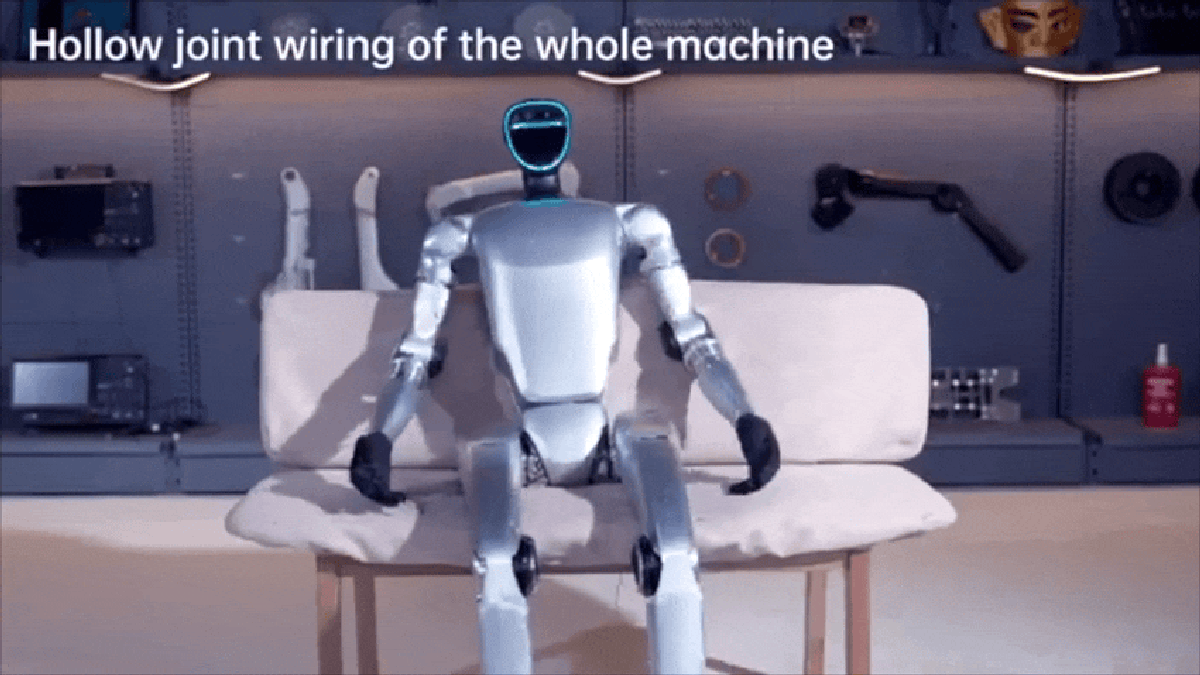The Evolution of Humanoid Robotics in the 21st Century
Over the past decade, the field of humanoid robotics has seen a significant evolution, with creators striving to make their robots more lifelike and human in appearance. However, a peculiar shift in the design and capabilities of bipedal robots is now emerging in the year 2024. Robotics companies are pushing the boundaries of traditional humanoid robot movements, embracing unconventional and sometimes unsettling contortions in their latest creations.
Unitree Robotics Unveils the G1 Robot
China-based Unitree Robotics recently unveiled their latest creation, the G1 robot, through a captivating video released on Monday. The video, accessible on YouTube, showcases the G1 in action, highlighting its unique capabilities. Priced at $16,000, the G1 demonstrates a series of unorthodox movements and maneuvers that set it apart from traditional humanoid robots.
The video features the G1 robot performing eccentric actions such as rising from the ground and executing a 180-degree torso rotation to greet individuals, reminiscent of a scene from “The Exorcist.” These movements bear a striking resemblance to the latest iteration of Boston Dynamics’ Atlas robot, known for its innovative methods of standing up.
Additionally, the video showcases the G1 robot’s ability to withstand external forces by enduring kicks and pushes. This display of resilience aims to showcase the robot’s advanced balancing capabilities, even under duress. However, witnessing acts of aggression towards a robot designed to mimic human form can evoke discomfort, prompting ethical considerations around the treatment of humanoid robots.
The Shift in Robotics Design and Functionality
This recent display of unconventional robotic movements marks a departure from previous trends in the industry. In the past, events like the DARPA Robotics Challenge emphasized robots emulating human behavior and dexterity. Companies like Boston Dynamics set benchmarks each year by showcasing their robots walking, running, and even executing acrobatic feats akin to skilled athletes.
Today, the landscape of robotics is evolving towards a new paradigm. While most robots have achieved basic human-like locomotion, the focus has shifted towards enhancing their capabilities beyond human limits. The next frontier involves imbuing robots with superhuman skills, whether in the form of gymnastic prowess or advanced cognitive reasoning abilities.
While the prospect of advanced General Artificial Intelligence (AGI) remains distant, the trajectory of robotics suggests a future where robots transcend menial tasks to engage in creative and intellectual pursuits. Rather than serving as mere assistants, robots equipped with cutting-edge technology may soon take on roles such as creating art or composing music, reshaping the human-machine dynamic in unforeseen ways.
In conclusion, the evolving field of humanoid robotics reflects a shift towards innovation and unconventional design choices. As robots continue to push boundaries and redefine their capabilities, the future of human-robot interaction holds limitless possibilities, paving the way for a new era of technological advancement.
Image/Photo credit: source url





